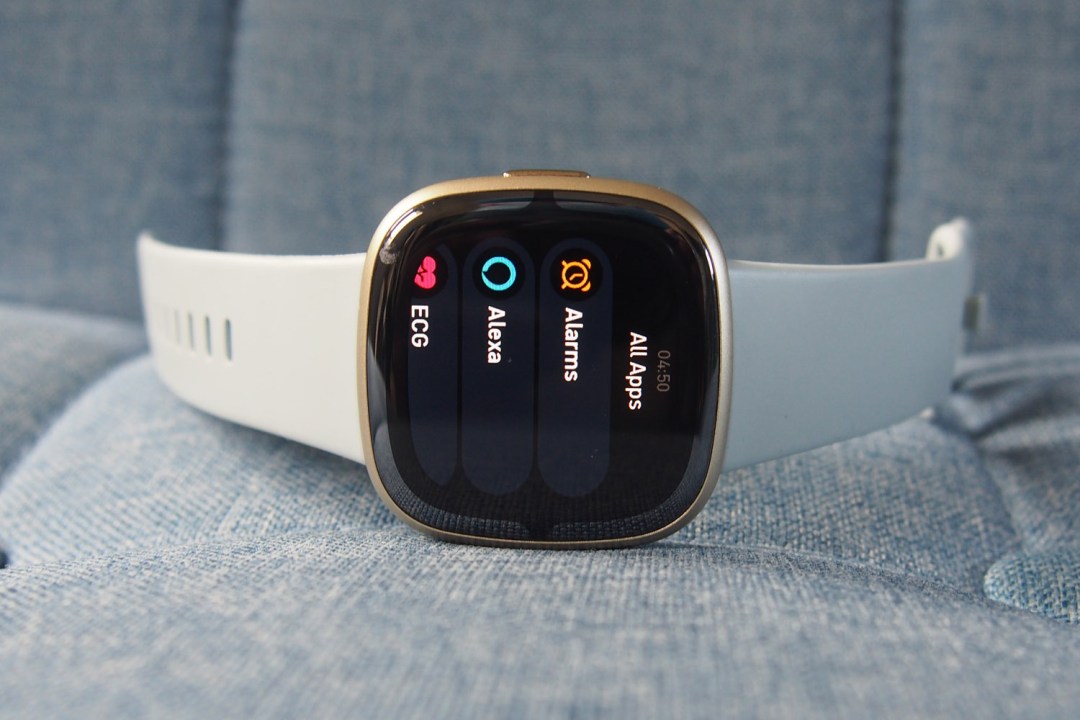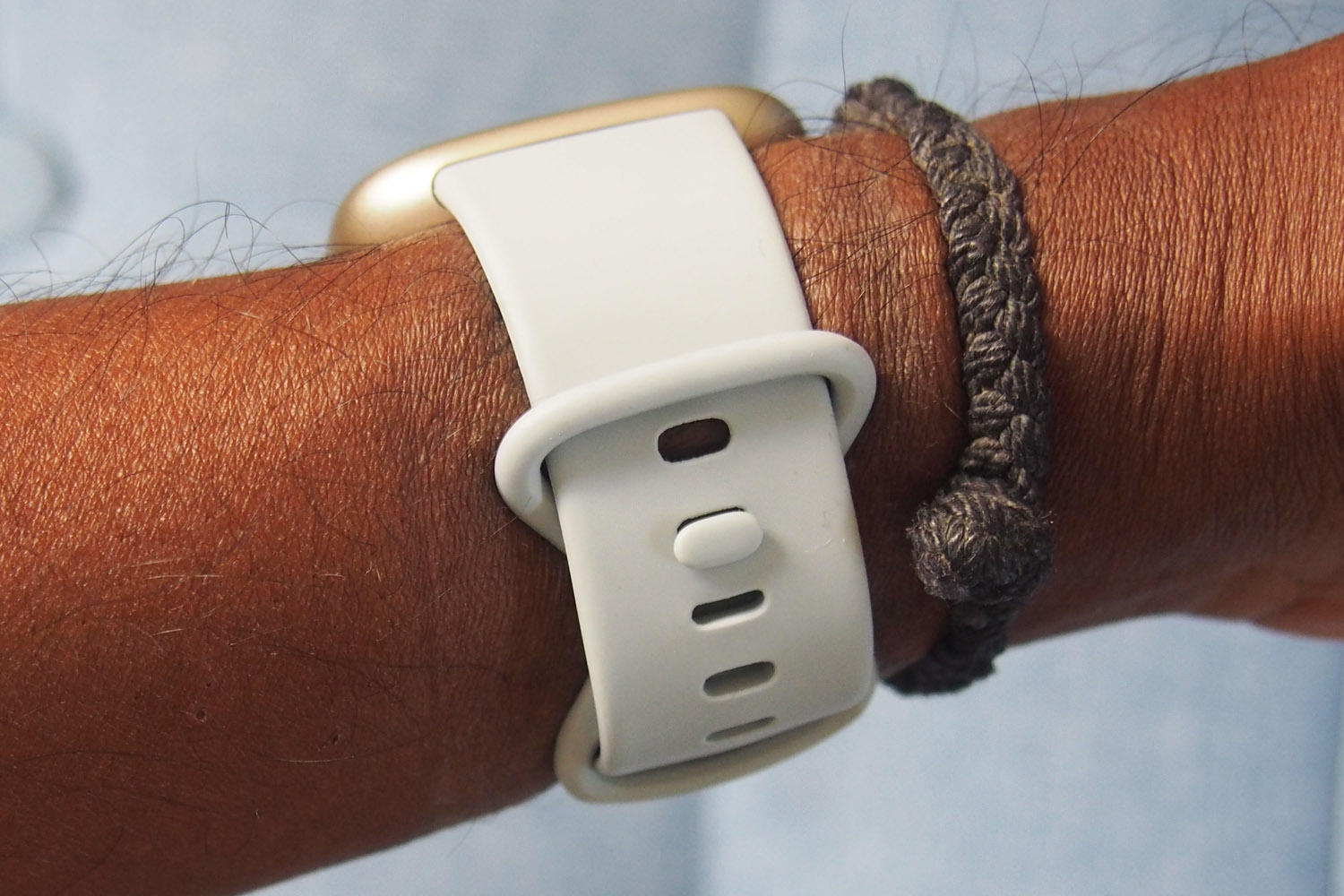Fitbit Sense 2 review: a fitness-first watch
Heath is at the forefront, but smart functions take a back seat

Fitbit has been in the business of keeping us active for a while now, having joined the original Apple Watch and Samsung Galaxy Watch in adding a heart health-monitoring ECG sensor to the original Fitbit Sense smartwatch. For its second generation, the firm wants to help keep stressful moments in check.
It lands at the same time as the Google Pixel Watch, which now sits at the head of the Google/Fitbit family of smartwatches. The two devices take very different approaches, though. Is the Sense 2 the Fitbit smartwatch you should be grabbing?
Design and build


Fitbit has ditched the bad haptic controls of the OG Sense for something more traditional, adding a physical button while otherwise keeping the general look and feel familiar. It’s a lot more useful to have when you don’t want to dive through menus or swipe through multiple home screens just to wake up Amazon Alexa or get to the exercise menu.
Everything is baked into a 40.5mm aluminium case, with soft curves to give this square smartwatch a more elegant feel.
You’ve got your pick of three case colours and a typically rich array of watch straps if you want to swap the bundled silicone one (which comes in small and large sizes) for a flax vegan leather one instead.
If you want to take the Sense 2 for a dip, it’s suitable to dunk in water up to 50 metres deep. It’ll track swim stats in the pool, but when you’re heading out into the open water, those metrics are off limits.
Screen

Fitbit doesn’t bring big changes in the screen department either. It’s the same rectangular 1.58in, 336×336 resolution AMOLED that’s bright, vibrant and delivers really rich colours.
It’s a screen that can stay always-on too, at the detriment of overall battery life, but the visibility is perfectly acceptable even when stepping outdoors into bright light. This is where AMOLED screens can have issues, but we had no problems quickly checking in on our daily step count.
If you’re not pressing that physical button to wake it up, you can deliver a quick double tap on the screen or use the raise to wake gesture. The display will then gently wake itself up as opposed to instantly switching on.
This is a screen that unfortunately doesn’t escape a dreaded black bezel, though in this instance it’s well masked by the collection of pre-loaded watch faces.
Interface


FitbitOS takes care of all things software related, as opposed to Wear OS on the Google Pixel Watch. It has a similar feel to the version of the operating system used on the first Sense, with some tinkering done in terms of where your finger swiping now leads you.
It now also brings the physical button into play to push you into your app screen, although getting from one screen to the next feels a little on the sluggish side.
More interesting here is what’s not here, as Fitbit seems to have streamlined the overall smartwatch experience. There’s no Wi-Fi, music player, or option to use Google Assistant like you could on its predecessor. There doesn’t seem to be any third party app support anymore either.
You can still view notifications from Android phones and iPhones, summon Amazon Alexa (with text-based responses to your queries) and Fitbit Pay is on board to enable contactless payments.
Some Google apps will be added in the future, with Google Maps and Google Wallet tagged ‘coming soon’. It will also get Bluetooth calling support at some point, so it will become a better smartwatch – just not quite the same level as the previous Sense.
Fitness and health tracking


This is really what you’re buying a Fitbit Sense 2 for and unlike the cheaper Versa 4, you’re getting the complete package as far monitoring your health and stress is concerned.
It will still count steps, monitor sleep and track heart rate, and do it all with a pleasing level of accuracy. You’re still also getting an ECG sensor, which can be used to detect heart conditions like atrial fibrillation. You won’t find that on Fitbit’s cheaper Versa smartwatch.
An optical and infrared sensor array tracks SpO2 levels and skin temperature during sleep. Fitbit also upgraded its EDA sensor, which along with on the spot readings, can now continuously monitor when the body might be experiencing signs of stress. It’ll fire off notifications on a regular basis to ask you how you’re feeling during the day, at which point you can make a beeline for the Fitbit phone app and its range of mindfulness modes to get back to a calmer state.
When you want to up the intensity, Fitbit offers pretty much the same fitness-focused features as the first Sense. There’s built-in GPS, a host of workout modes including running, cycling and yoga, and it can track pool swims as well. It’ll generate Cardio Fitness Scores to offer a window into your current level of fitness, give credit when you hit fat-burning heart rate zones, and tell you when you should train based on its daily readiness scores.
It’s fair to say though that Fitbit’s sports tracking prowess doesn’t exactly rival what a similarly priced Garmin, Polar or Coros watch can deliver in accuracy, or the level of metrics and analysis you’ll get. Fitbit’s sports tracking feels built to fuel its other features but definitely feels geared more towards casual gym goers, or anyone that’s starting to build more workout time into their daily routines.
Battery life

Like the first Sense, the Sense 2 promises to last over a week between charges. That is as long as you don’t keep that screen on 24/7, among other things.
If you do stick it into always-on mode, you’re looking at 2-3 days depending on what other features you’re putting to good use. Live without the screen permanently illuminated and this will comfortably deliver six or seven days of monitoring metrics like heart rate, stress, sleep and steps.
Features like GPS and the new EDA sensor suck the battery faster, so the fast charging ability is a welcome one. It takes just 12 minutes to give you another day of watch time, which is ideal if you forget to charge it overnight and need a quick top-up while you’re frantically brushing your teeth.
The charging cradle remains the same as the one used on the first Sense. It’s small, light and magnetically clips to the back of the watch case, but is still a bit on the flimsy side. Picking a clutter-free charging station is the way to go.
Fitbit Sense 2 verdict

As a smartwatch that puts health, stress and sleep monitoring at the forefront, the Sense 2 offers plenty to satisfy most.
Outside of that, the Sense 2 does feel like an inferior smartwatch to its predecessor and to the new Google Pixel Watch, which packs a lot of Fitbit’s smarts.
The result is a strong health- and wellness-monitoring watch that offers reliable sleep and heart rate stats, and a smartwatch that loses out on third party apps, any sort of music features and is waiting for some big Google apps to arrive.
If you want the very best smartwatch out there, this isn’t it. If you want the best Fitbit smartwatch, there isn’t a huge amount separating the Sense 2 from what the Versa 4 can do for less money.
Stuff Says…
A sleek watch made for health and wellness monitoring that’s a poorer smartwatch thanks to some missing features from the original.
Good Stuff
Reliable fitness tracking features
Bigger push on stress monitoring
Addition of physical button
Bad Stuff
Loses features from first Sense
Stuttering software
Still just okay sports tracking
Fitbit Sense 2 technical specifications
| Screen | 1.58in, 336×336 AMOLED |
| OS | FitbitOS |
| Battery | 6+ days |
| Connectivity | Bluetooth |
| Durability | 5ATM water resistant |
| Dimensions | 41x41x12.3mm |



